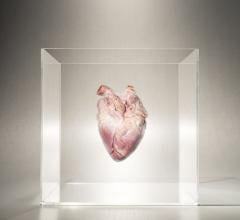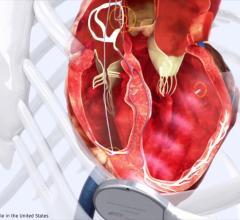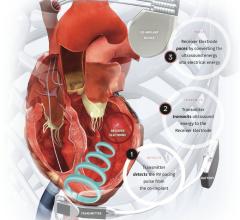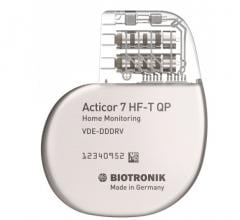
June 28, 2013 — St. Jude Medical Inc. announced CE mark approval of its next-generation quadripolar device, the Quadra Assura MP cardiac resynchronization therapy defibrillator (CRT-D). Built upon the company’s first-to-market quadripolar pacing system, the Quadra Assura MP CRT-D features MultiPoint Pacing (MPP) technology that enables physicians to pace multiple locations on the left side of the heart. This gives the clinician more choices to best optimize CRT pacing to meet individual patient needs.
The Quadra Assura MP CRT-D is designed to work with the Quartet lead, which has four electrodes to offer maximum flexibility for different pacing configurations. The new MPP capability allows physicians to program simultaneous or sequential delivery of two left ventricular (LV) pulses per pacing cycle, rather than the standard single pacing pulse. The capability to deliver two LV pulses per cycle allows physicians to tailor CRT pacing for each patient, potentially leading to more effective outcomes compared to single site pacing, which may be particularly beneficial in patients not responding to traditional bi-ventricular pacing therapy.
“Many patients with heart failure have scar tissue on their cardiac anatomy that makes it difficult to provide them with optimal and effective therapy. The new MultiPoint Pacing technology helps individualize therapy for each of my patients and potentially allows those patients unable to benefit from traditional cardiac resynchronization therapy to be effectively treated,” said Prof. Carlo Pappone, director of the Department of Arrhythmology at Maria Cecilia Hospital, GVM Care & Research in Cotignola, Italy.
CRT pacing can be delivered by an implantable cardioverter defibrillator (ICD) to resynchronize the beating of the heart's lower chambers (ventricles) that often beat out of sync in heart failure patients. Studies show that CRT can improve the quality of life for many patients with heart failure, a progressive condition where the heart weakens and loses its ability to pump an adequate supply of blood.
“Quadripolar pacing has become the standard of care for many physicians. We are pleased to continue our innovation by offering the industry’s first MultiPoint Pacing system, which provides a new set of noninvasive tools to address patients who are non-responders to traditional CRT pacing, potentially decreasing heart failure hospitalizations and lowering the economic burden,” said Eric Fain, president of the St. Jude Medical implantable electronic systems division.
Preliminary results from a study presented at this year’s Heart Rhythm Society (HRS) scientific sessions in May showed that after three months, 89 percent of patients treated with the St. Jude Medical MPP were classified as responders, an increase of nearly 20 percent. On average, the response rate to traditional CRT is approximately 70 percent.
More than 80 publications provide broad clinical evidence for the advantages of the St Jude Medical quadripolar technology. A number of additional studies are underway to support that MPP may provide improvements in cardiac function and hemodynamics. St. Jude Medical is currently conducting a pivotal U.S. clinical study, under an investigational device exemption (IDE), on the MultiPoint CRT pacing feature. The study is evaluating outcome benefits such as improved hemodynamics and cardiac function in heart failure patients who receive CRT. Additionally, a single-center, research study will compare six month efficacy of CRT with MPP at various programmed parameters. The results from these studies will strengthen the clinical evidence for MPP. Additionally, starting later this year, a European post-market study will further evaluate the efficacy of MPP therapy in patients not responding to traditional CRT.
Quadra Assura MP CRT-D is an investigational device and not commercially approved in the United States.
For more information: www.sjm.com


 May 22, 2023
May 22, 2023 








